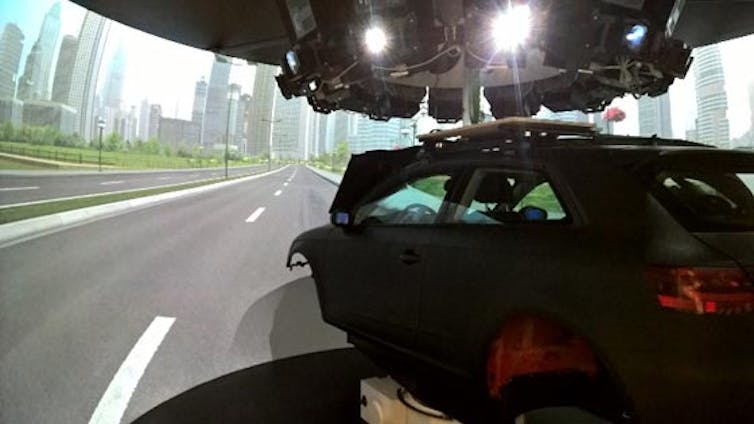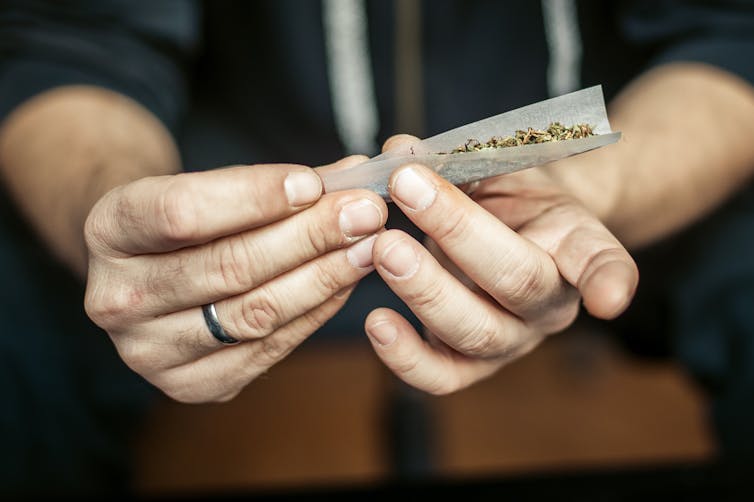Even if cannabis is legal, please don't toke and drive: ĖŻ└¹╝¦ūį╬┐expert
Published: June 22, 2018
A variety of conditions affect our ability to drive, including poor sleep, some prescription medications and alcohol. Cannabis is another.
Many people use cannabis for medical reasons, others for recreation. Figuring out whether someone should avoid driving can be tricky because of the variety of chemicals contained within the plant, the different ways people use cannabis and the fact that regular users can develop tolerance.
With Canada ŌĆō and modifying its Criminal Code to cover drug-impaired driving ŌĆō itŌĆÖs important to figure out how to determine whether someone is impaired.
At Toronto Rehab, we have the most advanced driving simulator in Canada ŌĆō and we are testing peopleŌĆÖs driving abilities after they have used various types of cannabis.
Underground lab
The iDAPT DriverLab contains a complete Audi A3, 360-degree field-of-view projection screen, surround-sound system, one-of-a-kind rain and glare simulators and a large seven-degree-of-freedom motion system.

In 2015, police reported 72,039 impaired driving incidents in Canada, with .
We use the iDAPT DriverLab to assess various conditions that affect driving performance, including cannabis use for medical and recreational purposes.
In Canada, the Senate has passed the federal governmentŌĆÖs , which will legalize and regulate cannabis, and Prime Minister Justin Trudeau has set Oct. 17 as the day Canadians will be able to legally consume marijuana. Another bill, , will create new provisions in the Criminal Code of Canada for drug-impaired driving.
Even after the regulations are set for smoking cannabis, edible forms still wonŌĆÖt be approved until the federal government can set rules on packaging, potency and health warnings.
Effects of cannabis
Cannabis is a plant that contains more than 500 chemicals. Two that are being used for medicinal purposes are delta-9-tetrahydrocannabinol, commonly known as THC, and cannabidiol, or CBD.
THC is the substance that gives the ŌĆ£highŌĆØ or euphoria, while CBD reduces the psychoactive effects of THC. Both THC and CBD are used for medical purposes such as relieving pain from multiple sclerosis or nausea from chemotherapy.
Recent data from the indicates that 12 per cent of Canadians aged 15 and older had used cannabis in the past 12 months. By comparison, the past-year use of other drugs, including crack, ecstasy, speed or methamphetamines, hallucinogens or heroin, was two per cent.
Some academics and policy-makers speculate that more people will experiment with cannabis after it becomes legal, which means that more people who arenŌĆÖt currently using the drug may get .
The effects of cannabis in the brain are different from alcohol. It can affect attention, vigilance, perception of time and speed, and the use of knowledge.
Drivers under the influence of alcohol tend to drive faster and closer to the cars in front of them. But those under the effects of cannabis tend to have lower reaction times. They drive slower and keep a larger distance from the car ahead.
The brain effects of cannabis also vary with how the drug is absorbed ŌĆō via the lungs, digestive tract or the skin. The effects of smoked cannabis can be felt within minutes, while the effects after ingesting cannabis is only apparent after at least 30 minutes and last for hours.
The concentration of THC within the blood also determines the size of the effect. The more there is, .
However, regular use of cannabis leads to tolerance. That may explain why people who use marijuana for medical purposes are generally not impaired. But it may also be due to the type of cannabis they use, and whether it has low concentrations of THC and higher concentrations of CBD.
Under the influence, or not?
So when it comes to cannabis and driving, how do you measure impairment?
THC levels can be detected using saliva, urine or blood. But the way cannabis is used ŌĆō smoking or vapourizing, eating leaves (in brownies), drinking oils, using topical creams or taking pills containing synthetic cannabinoids ŌĆō affect how quickly the drug enters the body and gets to the brain.
The inhaled forms of cannabis reach receptors in the brain within a few minutes and are able to produce the highest euphoric effects. Edibles have a delayed onset of action. Maximum THC blood levels occur between , and .

There are other questions also worth asking.
How long should someone wait, once they use cannabis, until they drive or work in a safety-sensitive job?
Is there a maximum level of THC that a person can reach before they are considered impaired? How can law enforcement professionals test drivers on the roadside, to determine impairment by cannabis? And finally, what happens when drivers mix alcohol with cannabis?
There are no definite answers to these questions.
Six-hour wait, or more?
The current recommendations from the endorses not driving for at least six hours after using cannabis. But the wait time can be longer depending on the user and the properties of the specific cannabis product used.
Police forces across the country have announced that they will start when they suspect someone of cannabis-impaired driving.
For now, police officers are using the ŌĆö a series of roadside challenges, including the horizontal gaze nystagmus test, the walk-and-turn test and the one-legged stand test.
However, as there is no evidence that cannabis affects the same areas of the brain as alcohol, these tests may not reveal impairment or may downplay the .
Using the iDAPT Driver Lab, we plan to answer these questions and others, including whether, from a driving perspective, it is safer to treat pain with medical cannabis or opioids.
WeŌĆÖll also test in-vehicle technologies and roadside devices to detect impairment, such as cognitive tests, as well as devices that can prevent accidents, such as forward and lateral collision mitigation systems.
Until then, itŌĆÖs probably best not to toke and drive or to operate heavy machinery.
is an associate professor in the Faculty of Medicine at the .
This article was originally published on . Read the .
![]()



